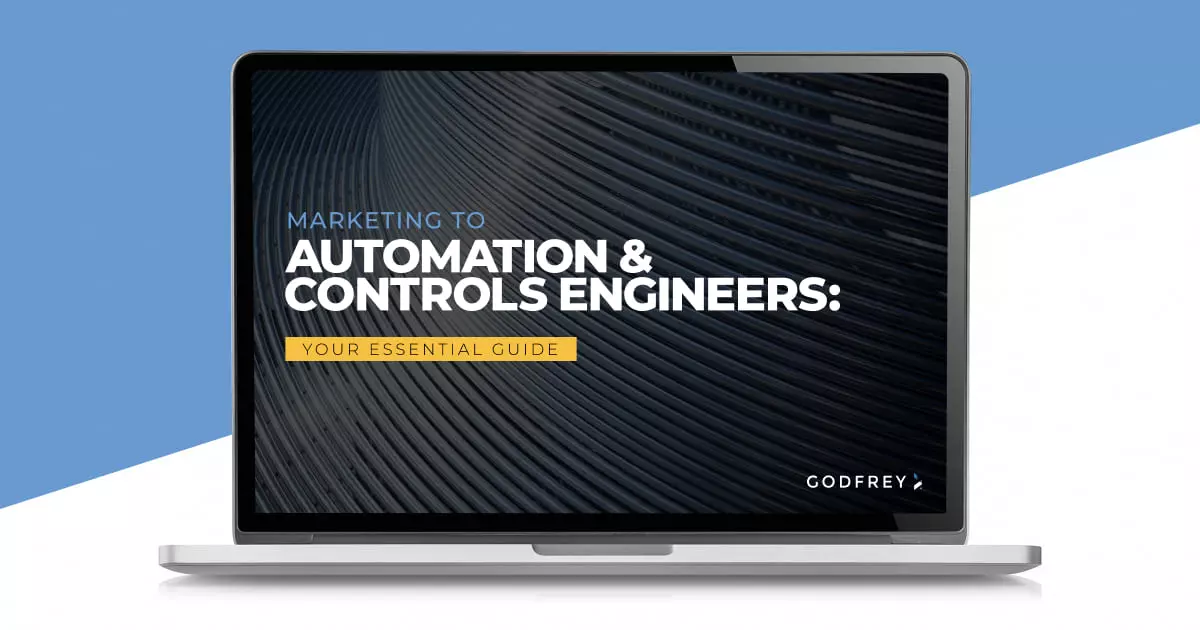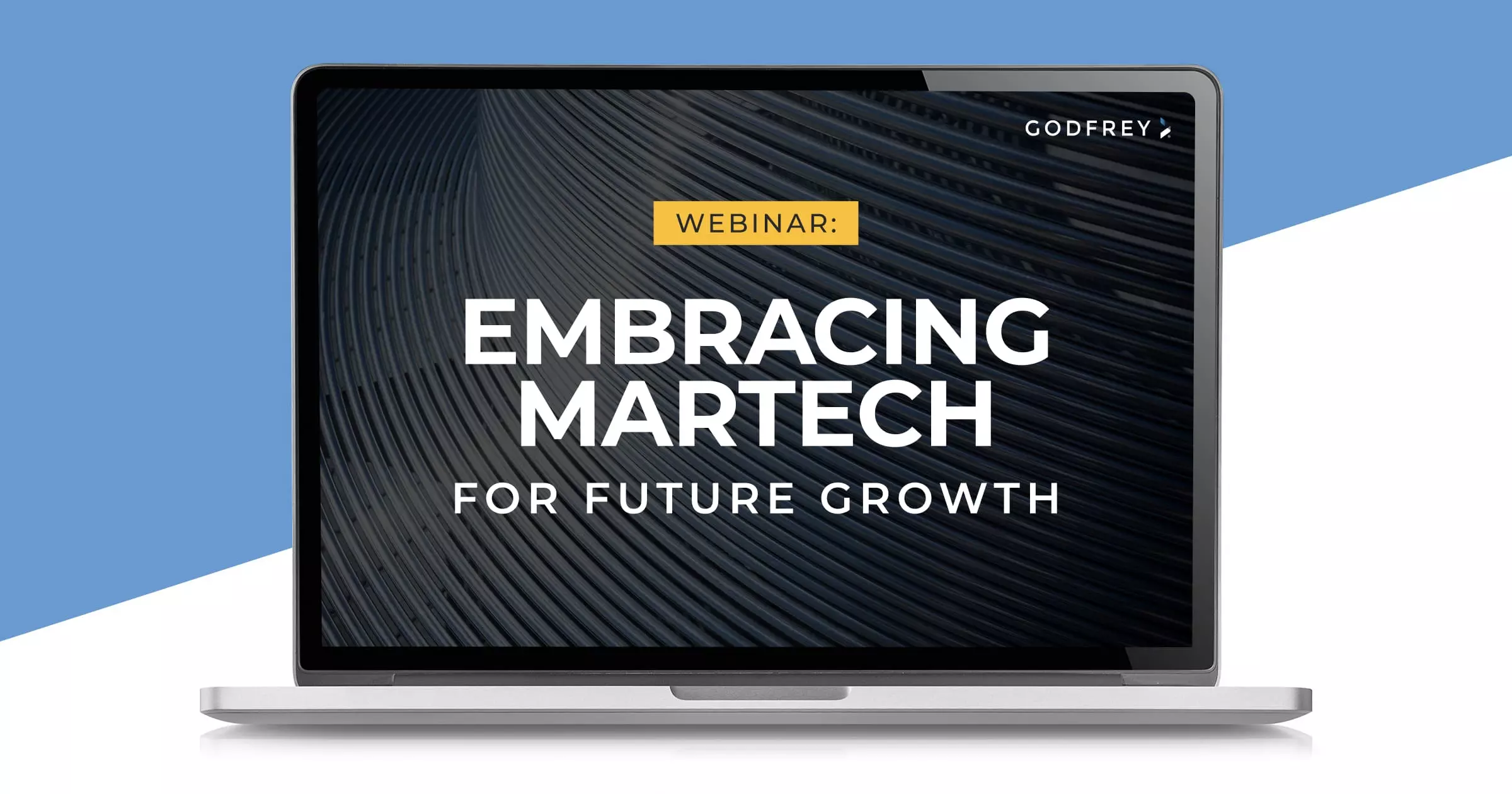A Focus on OEM Components

Welcome to our next installment of the industry series called “A Focus on … What B2B Marketers Need to Know.” In it, we’ll delve into trends within specific industries we serve and our thoughts on how these trends could impact marketing strategies.
In this edition, account planner Andy DeBrunner shares his insights on how companies can market their parts and/or subsystems to original equipment manufacturers (OEMs) for use in their products. With over eight years’ experience in marketing research and more than four years working with global OEM component manufacturers, he is acutely aware of the complexities and nuances of the buying process OEMs work within.
Godfrey partnered with AMG Research to study an emerging segment of your audience. Download the full report and view slides from the presentation we delivered at CFE Media’s 2017 Marketing to Engineers® event.
Q. How can manufacturers promote their components and assemblies to original equipment manufacturers?
A. It’s important to understand what really sets your company apart in the mind of your potential customer. You may be surprised to learn that it’s not always the products themselves but a reputation that you’ve established perhaps by providing the best customer service, never missing a delivery date or having the widest network of technical salespeople.
Because components can often suit an array of customers and applications in a variety of end-markets, touting what you offer beyond your products can help you deliver consistent messaging that’s unique to your company.
Audience insight is also important to fully understand your target audience and discover what they value most so you can position your company accordingly. Often the key decision-maker in the OEM buying scenario is the design engineer. Charged with selecting or spec’ing components and parts, the design engineer is involved at every step of manufacturing—from designing new products and working on upgrades, to looking to improve certain performance attributes and/or trying to reduce the cost of the end product. The design engineer is an explorer of information so understanding how to reach this person at the right time, in the right medium, with the right content is key to success.
It’s also important to note that though the design engineer may drive the decision, usually others are involved in the final selection. In many cases, there is an entire design team involved, where each person may have primary responsibility for a certain component or type of component, for example, mechanical vs. electrical. Beyond the design team, a larger buying team could include individuals in R&D, manufacturing, procurement or other disciplines. It’s important to understand who is involved and make sure all decision-makers are exposed to your messaging.
Q. What is the buying process for a component?
A. Not surprisingly, a buying process can range from very simple to highly complex, depending on the industry and type of product sold. For example, a component going into a medical device may need to undergo intensive review before it is accepted, while a component for an industrial machine made by a small niche manufacturer might only need approval by one person.
That said, a typical buying journey could involve the following steps for a design engineer or other key decision-maker:
- Gain awareness of a need. This could be designing a new product, correcting an issue with a current product, looking for an opportunity for improvement or even just learning about a new technology.
- Research what technology alternatives might be available and read case studies. Often, this exploration begins with the design engineer researching online or asking colleagues who have had similar challenges how they solved the problem. Industry research shows that 83 percent of design engineers use Google as their search engine of choice, and new research from Google shows that 71 percent of B2B researchers use generic searches early in the process. Another aspect of online activity: engineers do use social media to confer with colleagues about challenges and solutions.
- Investigate supplier offerings, technologies, products and services. Again, much of this activity today is done online with 42 percent of researchers using a mobile device during the B2B purchasing process. Further down the process, a site visit and/or capabilities presentation might be necessary but the challenge is making it to that point when you might not even know the engineer is looking at offerings. Google research shows that those involved in the B2B buying process are already 57 percent of the way down the path to a decision before they perform an action on your website.
- Compare competitive offerings and narrow the selection set. In larger companies, this step is often done by a buying committee where each member has unique interests from technical and business capabilities to price and delivery.
- Reach out for application assistance. If the design engineer is looking to spec a component new to a particular machine or application, he or she may want the supplier to offer technical assistance with drawings or aid with product development. It’s important to remember that, these days, this assistance may be via online chat or some other technology and not necessarily by calling the old 800 number.
- Place the order or finalize specs with your product’s attributes for the bidding process. Depending on the industry and need, an order could be placed immediately or it might need to go out for bid. If your component brings a lot of value to the OEM’s machine or end user, the design engineer may write a spec specific to your product and you may be able to secure a long-term contract. If you’re selling more of a commodity, you will likely end up negotiating with purchasing even if you thought you sold the engineer.
In any event, understanding this process is key to developing content and messaging that will resonate with your audience as they progress through their buying journey.
Q. What are some of the engineers' pain points that effective marketing can address?
A. It's important to remember that engineers are under a lot of pressure. On the one hand, they are required to innovate products to stay ahead of the competition. On the other hand, innovation often brings risk which can make engineers wary of making even small changes. If you have a component that works for the design engineer’s challenge, the reward to use your product has to be greater than the risk. It’s also important to note that engineers are sometimes affected by procurement departments that tighten purse strings and limit options.
Other challenges the design engineer faces are product reliability, product quality, staying current with new technologies and price/performance problems. As a component supplier, knowing this can really help you position your company and products as solutions to their ongoing issues. Frame your messaging around your strengths—whether it’s reliability in delivering your parts on time, the life cycle of your components or potential cost-savings.
Godfrey Team
Godfrey helps complex B2B industries tell their stories in ways that delight their customers.




